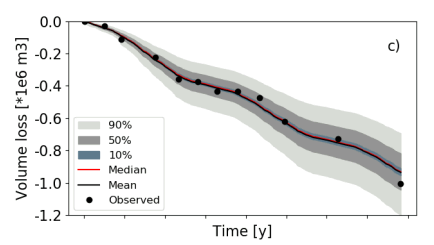A. Kroon1, 2*, M.A. de Schipper1, P.H.A.J.M. van Gelder1, S.G.J. Aarninkhof1
1 Delft University of Technology, This email address is being protected from spambots. You need JavaScript enabled to view it., This email address is being protected from spambots. You need JavaScript enabled to view it., This email address is being protected from spambots. You need JavaScript enabled to view it., This email address is being protected from spambots. You need JavaScript enabled to view it.
2 Svašek Hydraulics
Introduction
The Building with Nature (BwN) design philosophy (de Vriend et al, 2015) uses natural dynamics and resources as adaptive coastal protection. Consequently, the degrees of freedom and therewith the uncertainty of the state of the system increase by allowing these natural dynamics. Thus, evaluating this state at a certain point in time requires a different approach than in case of a more traditional coastal protection. Over the past decades several probabilistic frameworks have been developed to allow for the effects of natural dynamics in coastal modelling (Callaghan et al., 2013; Baart,2013; Ruggiero et al., 2010; Baquerizo and Losada, 2008; Ranasinghe et al.,2012). However, these methods can give a false sense of confidence when ignoring model uncertainty, introduced by these frameworks. We investigate the importance of model uncertainty in the prediction of coastline response of a BwN solution under stochastic wave forcing.
Methods
We make a stochastic prediction for the Sand Engine, a peninsula shaped nourishment of 21 million m3. The stochastic method runs a one-line model numerous times with varying wave input and settings, using a Monte Carlo procedure. In this stochastic prediction we include model uncertainty and wave climate variability. The model uncertainty is obtained using a GLUE approach on model-observation discrepancies and, the wave climate variability is based on a bootstrapping procedure of historical observations. As a result, both of these uncertainties are obtained on observational data rather than estimates of variances.
Results
The stochastic prediction results in a confidence probability distribution of losses at the sand engine. Comparing the bandwidth against observations for the same period shows that we are able to represent the variance in the volume losses at the Sand Engine (Figure 1). Results show that the importance contributions varies with the time scales considered.

Figure 1 Stochastic forecast of volume loss compared to observed volume loss for the period of June 2015 to January 2018.










